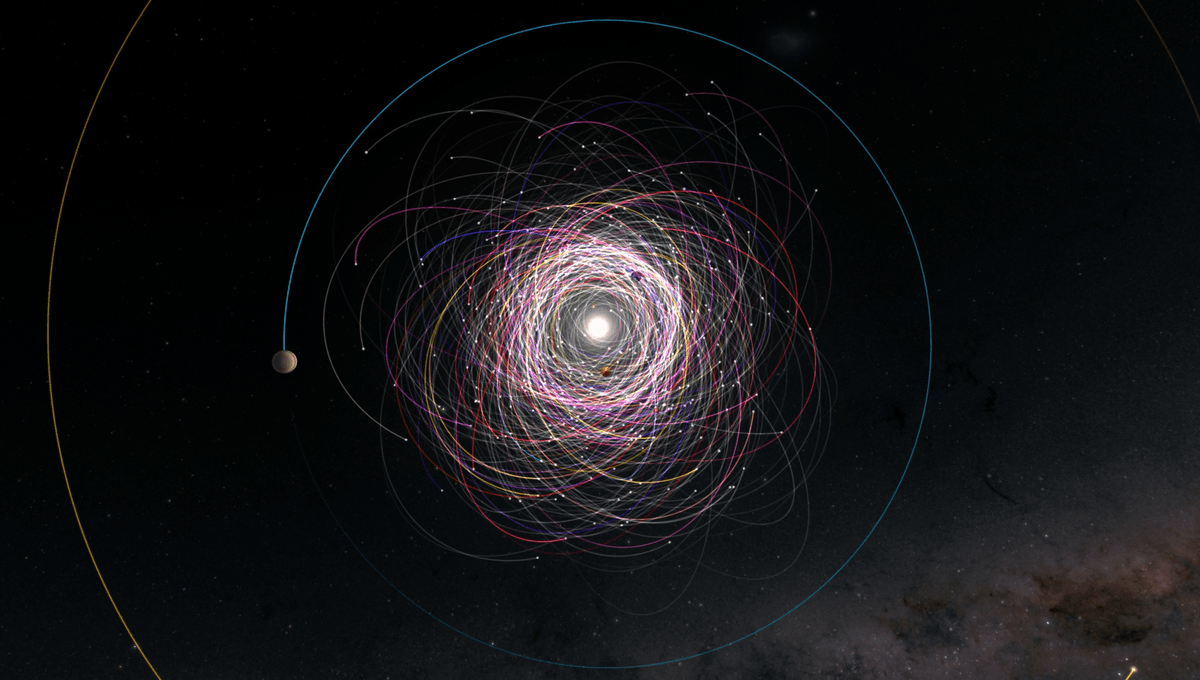
The European Space Agency’s Gaia spacecraft has not only created the most accurate map of the Milky Way, it has also measured over 150,000 asteroids. And among that data, it found that hundreds of them might have a little moon. If confirmed, it will end up nearly doubling the known number of binary asteroids.
It is not uncommon for asteroids to have a small companion. There’s Didymos and Dimorphos, the latter targeted by the DART mission. Or asteroid Dinkinesh, visited by Lucy, which hid not one but two little moons. Gaia’s incredible precision in measuring the position and motion of celestial objects has previously measured known binary asteroids. With that demonstration, it was able to take on finding new ones.
“Binary asteroids are difficult to find as they are mostly so small and far away from us,” lead author Luana Liberato of Observatoire de la Côte d’Azur, France, said in a statement. “Despite us expecting just under one-sixth of asteroids to have a companion, so far we have only found 500 of the one billion known asteroids to be in binary systems. But this discovery shows that there are many asteroid moons out there just waiting to be found.”
Gaia’s Data Release 3 was refined in a Focused Product Release that put a spotlight on the 156,823 asteroids it had measured. The work refined the original observations by making them 20 times more precise. Using those incredibly accurate measurements, the team was able to find wobbles in the asteroids consistent with the presence of a companion. They found 352 candidates.
“Gaia has proven to be an outstanding asteroid explorer, and is hard at work revealing the secrets of the cosmos both within and beyond the Solar System,” added Timo Prusti, Project Scientist for Gaia at ESA. “This finding highlights how each Gaia data release is a major step up in data quality, and demonstrates the amazing new science made possible by the mission.”
The next full data release from Gaia is expected in mid-2026. In the meantime, the spacecraft is continuing to conduct its amazing observations and astronomers continue to pore over the incredible data. And for those keen on binary asteroids, the Hera mission launches in two months, to go and study Didymos and see the effects of the first-ever planetary protection exercise up close. It will reach the asteroid in October 2026.
The study is published in Astronomy & Astrophysics.
Source Link: Hundreds Of Possible Moons Discovered Orbiting Around Asteroids